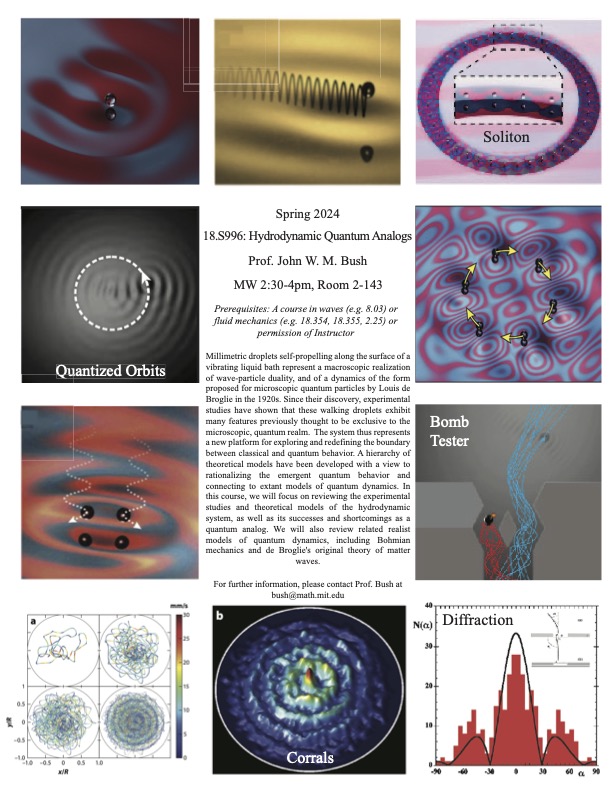
Spring 2024. Lectures MW2:30-4pm, Room 2-143.
Millimetric droplets self-propelling along the surface of a vibrating liquid bath represent a macroscopic realization of wave-particle duality, and of a dynamics of the form proposed for microscopic quantum particles by Louis de Broglie in the 1920s. Since their discovery, experimental studies have shown that these walking droplets exhibit many features previously thought to be exclusive to the microscopic, quantum realm. The system thus represents a new platform for exploring and redefining the boundary between classical and quantum behavior. A hierarchy of theoretical models have been developed with a view to rationalizing the emergent quantum behavior and connecting to extant models of quantum dynamics. In this course, we will focus on reviewing the experimental studies and theoretical models of the hydrodynamic system, as well as its successes and shortcomings as a quantum analog. We will also review related realist models of quantum dynamics, including Bohmian mechanics and de Broglie’s original theory of matter waves.
HANDOUTS
Handout 1
LECTURE NOTES AND SLIDES
Lecture 1 Slides – Part A and Lecture 1 Slides – Part B
Lecture 6 Notes and Lecture 6 Slides
Lecture 7 Notes and Lecture 7 Slides
Lecture 8 Notes and Lecture 8 Slides
No class on March 8: Assigned reading
Lecture 13 Slides: Escape from Shadow Physics by Adam Kay
Lecture 14: Orbital pilot-wave dynamics
Lecture 15: Strobe and Boost models
Lecture 16: More sophisticated models
Lecture 17: André Nachbin on Conformal Mapping in HQA
Lecture 18: A. Friedel oscillations; B. Spin lattices
Lecture 21: A. Above Threshold B. Bound States I, C. Bound States II
Lecture 22: Generalized pilot-wave theory
Lecture 23: Classical pilot-wave theories
PROBLEM SET MATERIALS